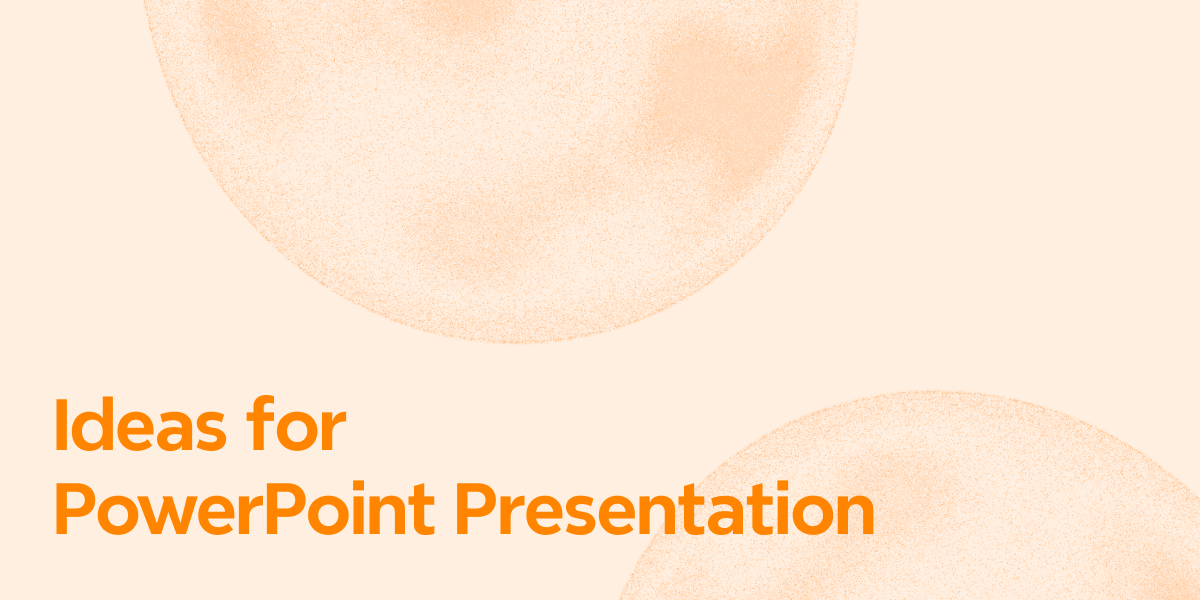Feb 22, 2025
A Simple Guide to Blended Learning
Feb 22, 2025
A Simple Guide to Blended Learning

Education is constantly evolving, and blended learning stands at the forefront of this change. This guide explores blended education, its advantages, various models, and how tools like Xmind AI can elevate the learning process. But first, let's address the question: what is blended learning? The blended learning meaning encompasses a modern approach to education that combines online and in-person instruction. Would you be ready to discover how this blended curriculum can reshape education?
Explore visual learning with Xmind!
What Is Blended Learning
Blended learning, one type of learning strategies, is an educational approach that seamlessly integrates online and face-to-face learning experiences. This blended learning definition goes beyond just using tech in the classroom; it's a fundamental shift in how learning is structured and delivered. It combines the best of traditional teaching with the flexibility and accessibility of digital resources, creating a dynamic and personalized learning environment. Think of it as a tailored educational experience designed to meet individual needs.

Types of Blended Learning: Blended instruction isn't a monolithic concept. It encompasses various models, each with distinct characteristics:
F2F Supplemented: Traditional face-to-face instruction enhanced with online resources.
Replacement: Online learning replaces some traditional face-to-face instruction.
Mixed Mode/Concurrent: Students can choose to attend classes either in person or online.
Integrated: Online and face-to-face components are interwoven and interdependent.
Benefits of Blended Learning
Blended learning offers a multitude of advantages for students and educators alike.
Flexibility and Personalized Learning
Blended learning offers flexibility for students to learn at their own pace and from any location with internet access. It also provides personalized learning experiences by adapting to individual learning styles through data-driven instruction.
Increased Engagement and Motivation
The blend of online and offline learning boosts learner engagement. Interactive online content, multimedia resources, and collaborative activities enhance the learning environment. Diverse resources and interaction opportunities engage students, promoting student agency.
Improved Accessibility and Learning Outcomes
Blended learning enhances education accessibility for diverse student needs. It provides online resources for disabled students and flexibility for those struggling with traditional classes. Studies confirm improved learning outcomes through personalized instruction and interactive online content, boosting comprehension and academic performance.
Recommended Platform for Blended Learning: Xmind AI
Xmind AI is a powerful mind mapping and visual collaboration tool that perfectly complements the blended learning environment. It empowers students to visualize complex concepts, organize learning materials, and collaborate effectively with peers.
How Visual Learning Enhances Understanding
Cognitive science has demonstrated the profound impact of visual learning on information processing. Visual aids, such as mind maps and diagrams, can significantly improve information retention and comprehension. They help students organize information, identify patterns, and make connections between different concepts.
How Xmind AI Enhances Blended Learning
- Collaborative Features for Group Projects:
Xmind's collaborative tools facilitate teamwork and project management. Students can work together on mind maps, brainstorming ideas, sharing resources, and co-creating learning materials. This fosters collaboration, communication, and shared understanding. Imagine a group of students working on a science project. They can use Xmind to collaboratively create a mind map outlining their research, assigning tasks, and tracking their progress.
- Visual Organization of Learning Materials:
Xmind helps students organize notes, assignments, and study resources in a visual and accessible format. Mind maps can be used to structure notes from lectures, organize research for papers, and create study guides for exams. This visual organization improves time management and study efficiency. A student could use Xmind to create a mind map for each chapter of a textbook, organizing key concepts, definitions, and examples.
- AI-Powered Assistance for Personalized Learning Paths:
Xmind's AI capabilities can personalize learning experiences. AI-generated mind maps can provide students with a starting point for their learning, while content recommendations can guide them to relevant resources. Adaptive learning paths can adjust to individual learning progress, ensuring that students receive the support they need. Xmind AI can suggest related topics or resources based on the user's current mind map, helping them explore the subject matter more comprehensively.
- Cloud Sync for Connecting Online and Offline Content:
Xmind's cloud sync capabilities enable seamless access to mind maps across devices. Students can start a mind map on their laptop at home, continue working on it on their tablet during their commute, and then finalize it on their desktop at school. This ensures that learning is not confined to a specific location or device, promoting continuous and flexible learning. Changes are automatically saved and synced, eliminating the risk of losing work and ensuring everyone is working with the most up-to-date version.Experience the power of Xmind AI.
Exploring Different Blended Learning Models
Blended learning comes in various forms, each offering unique blended learning solutions.
Flipped Classroom
Students learn content online at home and engage in activities in class, promoting more interactive learning during class time. Students might watch a lecture video at home and then work on problem sets or participate in discussions in class. This model allows for deeper dives into the material during class time, as the foundational knowledge is acquired beforehand.
Rotational Model
Also known as the rotational model, this approach involves students rotating between online and in-person learning stations, providing a balanced mix. A student might spend part of the class time working on an online simulation and the other part working on a hands-on lab activity. This model caters to different learning styles and allows for varied activities within a single class period.
Flex Model
Students have a high degree of autonomy in choosing learning activities and pacing, emphasizing personalized learning. A student might have a personalized learning plan outlining topics and resources. This model is ideal for self-directed learners who thrive in independent learning environments. Teachers act as facilitators, providing guidance and support as needed.
A La Carte Model
Students choose individual online courses to supplement traditional learning, giving them greater control. A student might take an online statistics course to complement their in-person math class. This model allows students to customize their education based on their interests and needs, filling in gaps or exploring advanced topics.
Enriched Virtual Model
Students primarily learn online, but have some required face-to-face interactions, such as tutoring or group projects. This model offers a high degree of flexibility while still providing opportunities for in-person connection and support.
Blended Learning vs. Hybrid Learning
While the terms are sometimes used interchangeably, blended learning and hybrid learning have distinct meanings.
Blended learning, as discussed, combines online and in-person learning within a course or subject.
Hybrid learning often refers to courses or programs that are offered both online and in-person, allowing students to choose their preferred mode of learning.
The key difference lies in the level of integration. Blended learning integrates online and offline components within a single course, while hybrid learning offers separate online and in-person options for the same course.
Blended Learning in Action: Real-World Examples
Blended learning is being used in many educational settings, showcasing various blended learning examples.
K-12 Education
K-12 schools use blended learning in the classroom to personalize instruction, boost engagement, and improve outcomes. A high school might use blended learning for personalized math instruction, allowing students to work at their own pace. For example, a student struggling with algebra could use online resources for extra practice, while a student excelling in the subject could explore more advanced concepts. Blended learning can also be used to differentiate instruction for students with diverse learning needs, providing customized support and resources.
Higher Education
Colleges and universities are adopting blended learning for flexibility and accessibility. A university might offer a blended history course with online lectures and in-person discussions. This format allows students to learn at their own pace and revisit lectures as needed, while also providing opportunities for interaction and debate in the discussion sections. Blended learning is also being used in professional development programs, allowing working adults to continue their education while balancing their work and personal lives.
Corporate Training
Companies use blended training to improve employee engagement and skill development. A company might use it to train new employees, combining online modules with in-person workshops. For example, new hires might complete online modules covering company policies and procedures, then participate in interactive workshops to practice applying this knowledge in real-world scenarios. Blended learning can also be used for ongoing professional development, allowing employees to access training materials at their convenience and track their progress. This approach can be more cost-effective and efficient than traditional training methods.
Conclusion
Blended learning is reshaping education, offering a more flexible, personalized, and engaging way to learn. By embracing it and using tools like Xmind AI, students and educators can reach their full potential.
Start your blended learning journey with Xmind today!
FAQs
Q1. What is blended learning?
Blended learning combines online and in-person learning, creating a more flexible and personalized educational experience.
Q2. What are the key benefits of blended learning for students?
Key benefits include increased flexibility, personalized learning, greater engagement, improved accessibility, and potentially better academic outcomes. It also promotes collaborative learning and enhances student agency.
Q3. How does Xmind support blended learning environments?
Xmind facilitates visual learning, collaboration, and organization, making it easier for students to connect online content with in-class activities and manage their learning journey. It can be used as part of a digital adoption platform for blended learning.
Q4. What are some common examples of blended learning models?
Common examples include the flipped classroom, rotational model, flex model, and a la carte model. These models incorporate various blended learning technologies and methods.
Q5. How does blended learning differ from hybrid learning?
Blended learning integrates online and offline learning within a course, while hybrid learning often refers to courses offered both online and in-person. Both approaches utilize technology-mediated instruction to enhance the learning experience.
More Posts
15 PowerPoint Presentation Ideas to Fix Boring Slides in 2025
Explore 15 creative PowerPoint presentation ideas to make your slides more engaging and effective in 2025. Leanr how Xmind plays an essential role in your presentation design and delivering.

10 Best Presentation Software Tools for Remote Teams (2025 Guide)
Discover the best presentation software with AI power for remote teams in 2025. Compare tools (Xmind) and features to boost team communication and visual storytelling.

Visual Communication: Making Your Presentations Understood
Discover what visual communication is and how to use it in presentations. And use Xmind in this process to clarify ideas, boost engagement, and deliver your message.


One space for all your ideas
Organize thoughts, visualize structures, connect ideas, and unlock insights.
Get Started for Free


